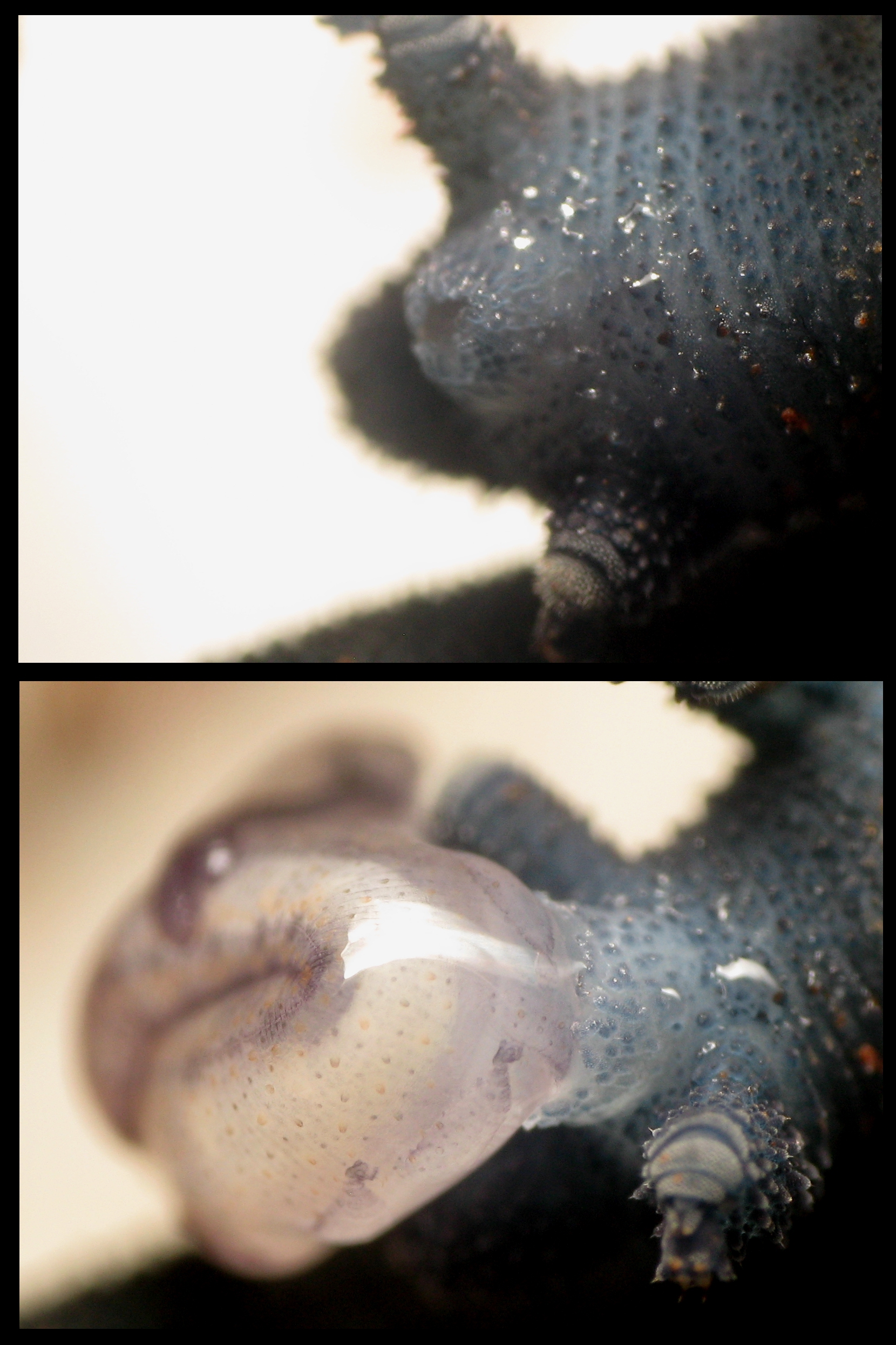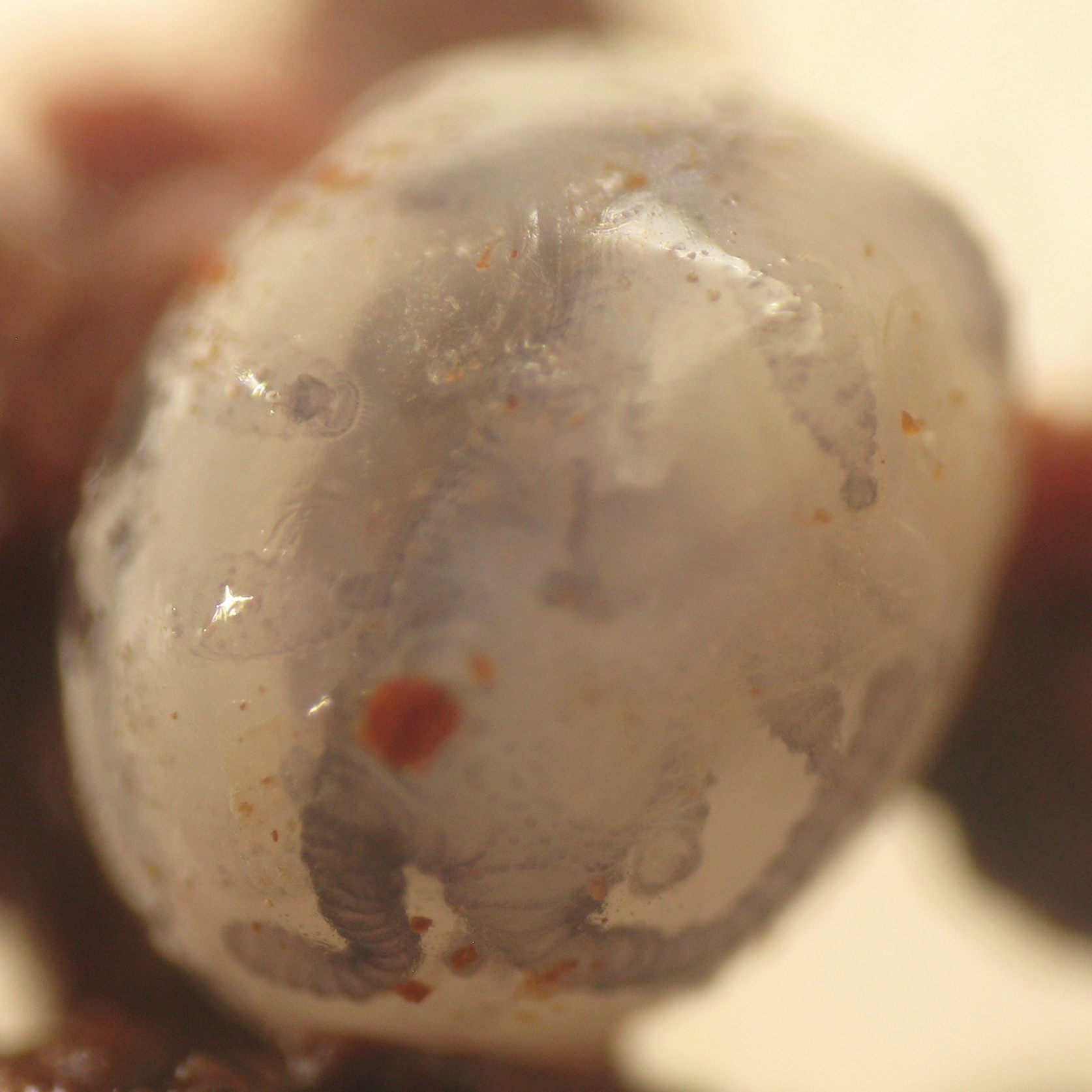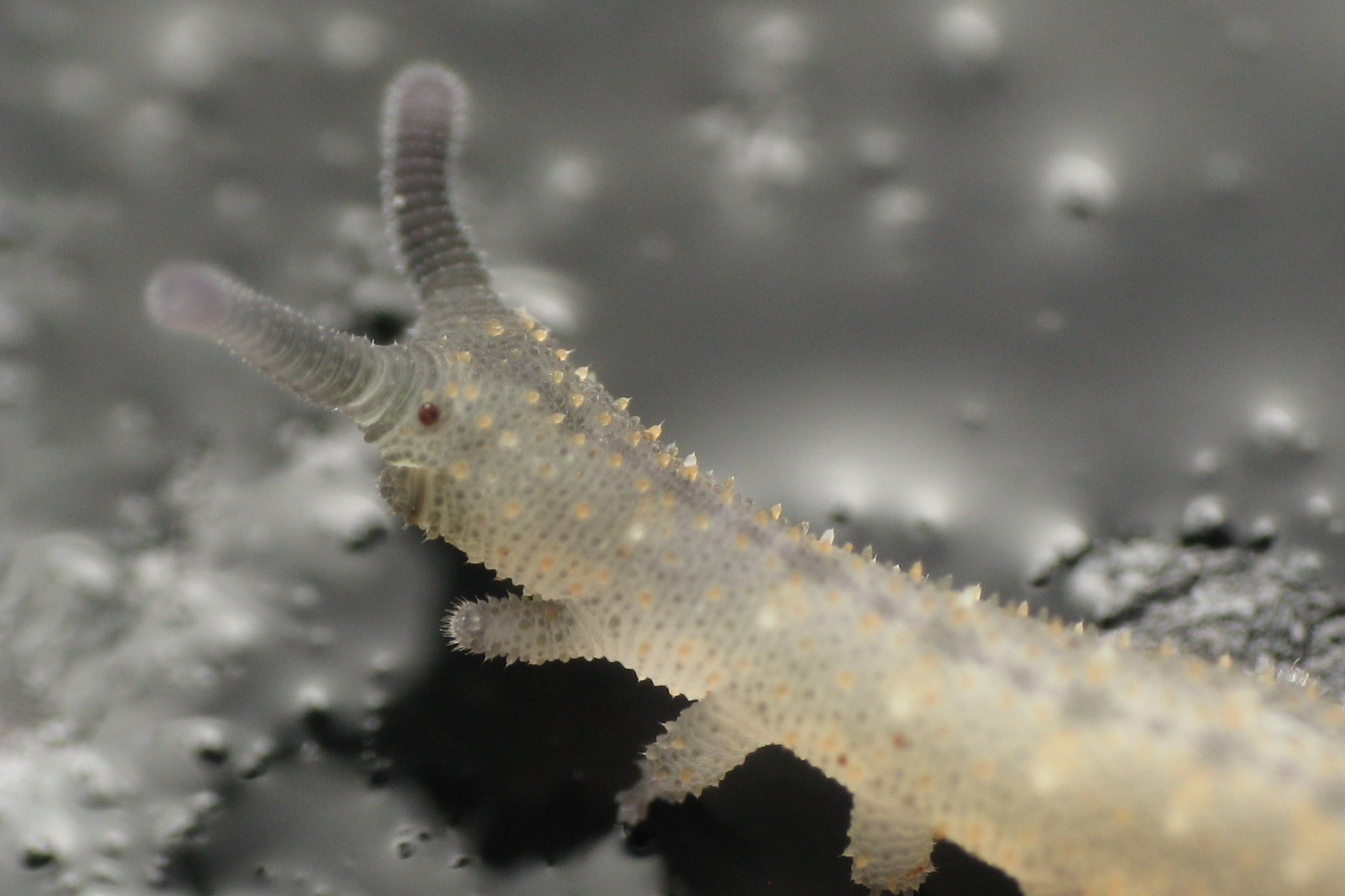Reproduction
The Euperipatoides rowelli exhibits unique behaviors in terms of reproduction. E. rowelli carries out sexual reproduction, which is a process that creates a new organism by the fertilization of one sex cell from one parent to another sex cell. This method of reproduction takes place when the male attracts the female by placing a spermatophore on top of his head (Australian Museum 2010). Interations between male and female E. rowelli are very unique. The male then pushes the spermatophore directly into the female genitalia. This is then absorbed into the female reproductive system where the sperm can be stored until the eggs cells are mature enough for fertilization (Glime 2013). A female E. rowelli is able to have multiple mates, and store sperm from multiple males at a time (Reinhard and Rowell 2005). When the egg cells reach maturity the female is ready for fertilization. Fertilization takes place when amoeytes within the female’s blood collect inside the storage packets of sperm and soil the packets (Glime 2013).
An interesting behavior of reproduction in the Onychophora is that the young can be born live or hatched as eggs. Female reproductive strategies are vastly diverse among the Onychophora. These strategies are put into two categories, which include the oviparous species meaning animals that lay eggs and the ovoviviparous species meaning animals that endure live birth.
In Onychophora, oviparous species, the majority of embryonic development of the yolky egg occurs outside the female, in a yolky egg inside a protectant shell. Another oviparous species that lay eggs is the Allogona ptychophora, also know as the Idaho Forestsnail. In comparison, the developing embryo of the onychophora ovoviviparous species obtains nutrients through the placenta of the uterine wall in the female (Ericksson and Tait 2012). This results in the live birth of the young. An additional ovoviviparous species that endures live births includes the Common Muskrat (Ondotra zibethicus). To learn more about the differences between sexual reproduction and other reproductive cycles click on the interactive website provided byLearn.Genetics.
Pictured Above: Euperipatoides rowelli performing live birth
Pictured Below: To the left is a Euperipatoides rowelli still inside the egg membrane, and to the right is a side view of a baby Euperipatoides rowelli.
To continue learning about multiple organisms with unique reproductive characteristics such as the Bargibant's Seahorse (Hippocampus bargibanti); a species which can endure male pregnancy or the Brazilian/Mexican Free-Tailed bat (Tadarida brasiliensis); a polygynandrous species, be sure to check out the webpages of additional students at the University of Wisconsin- La Crosse at MultipleOrganisms.net
To continue your research check out the Facts page.
For further information on references used, follow the link provided.

